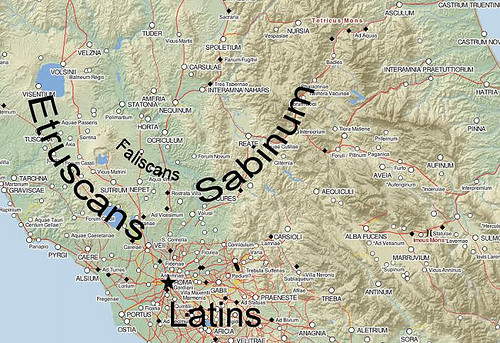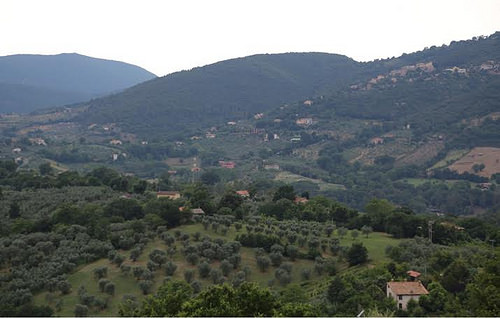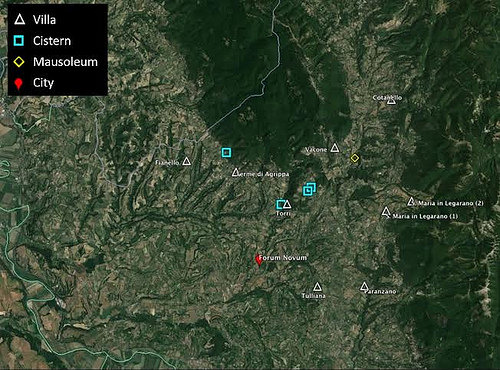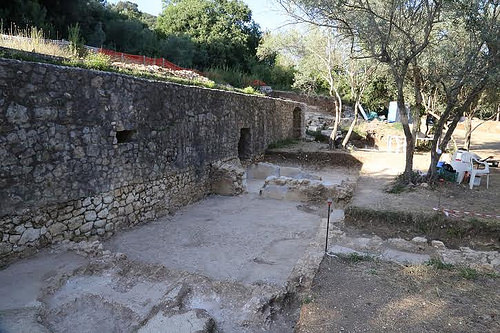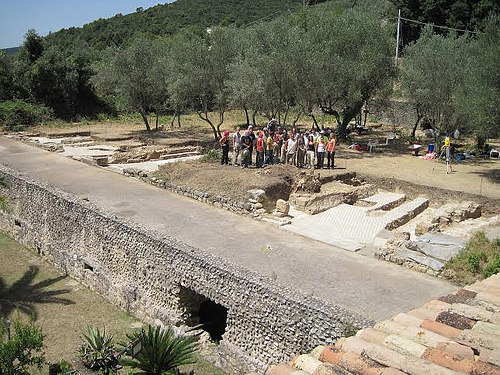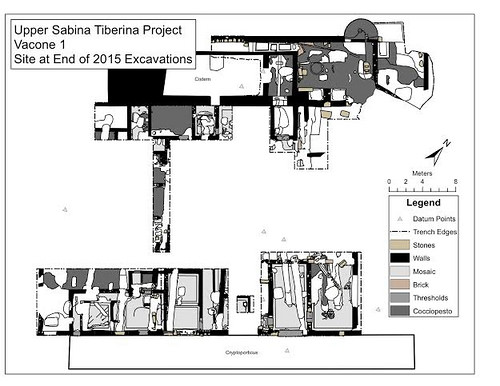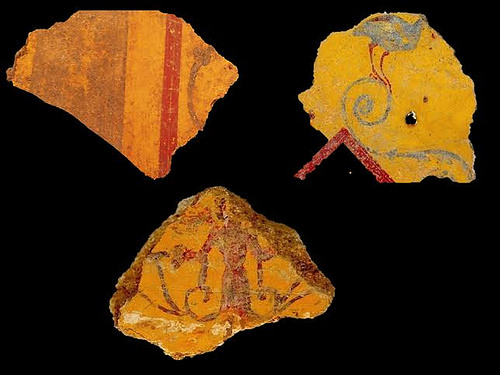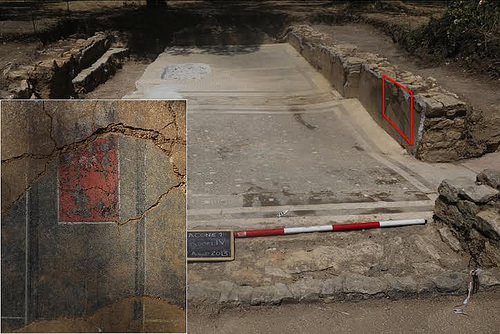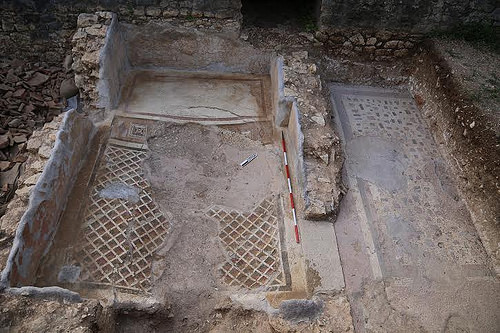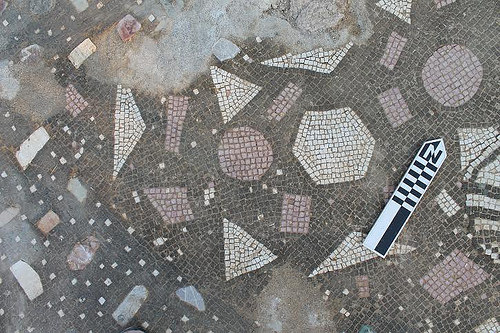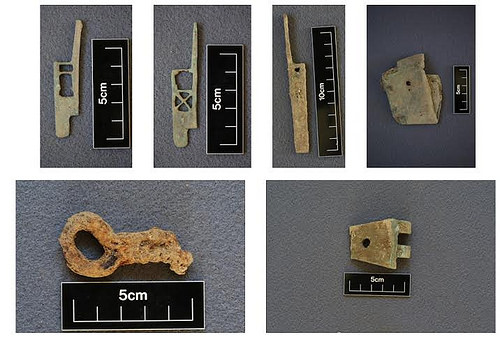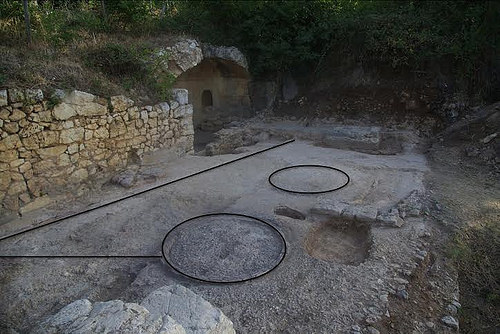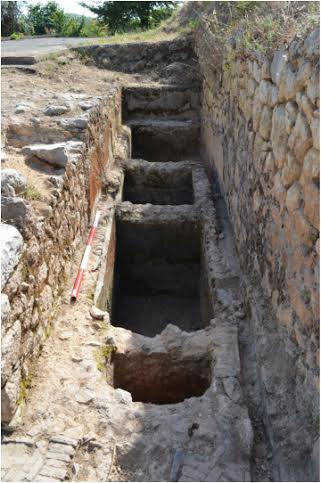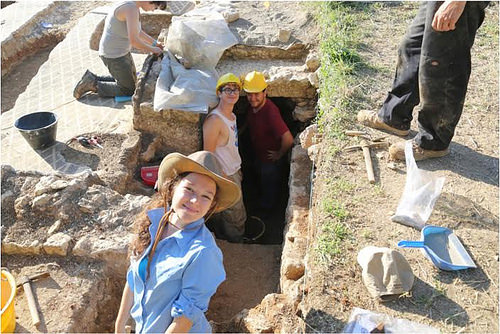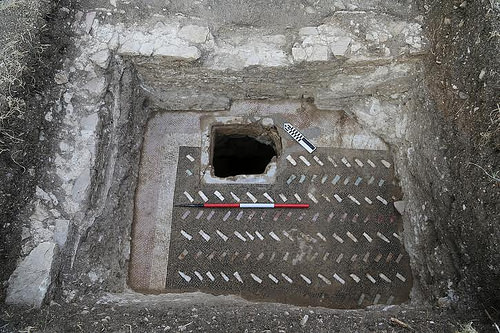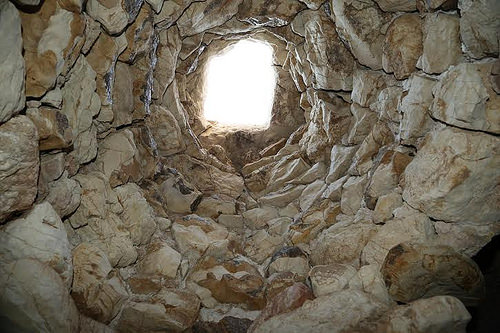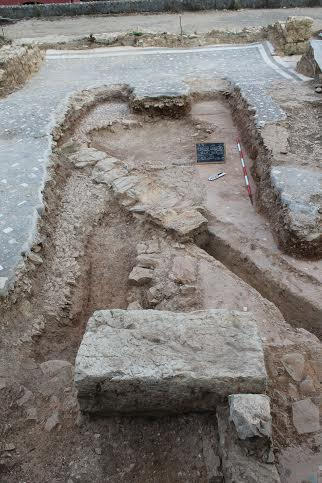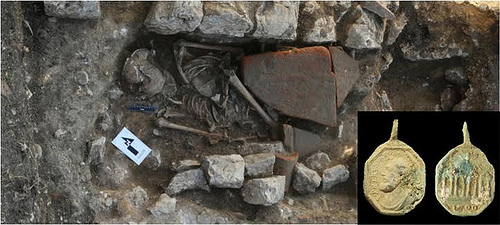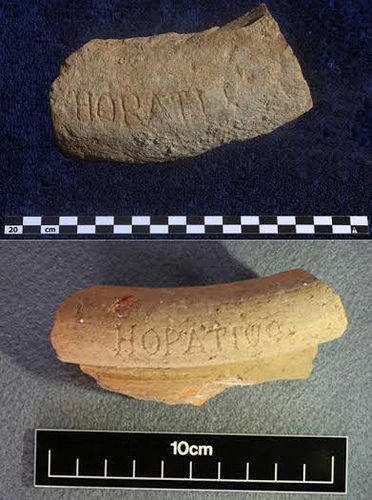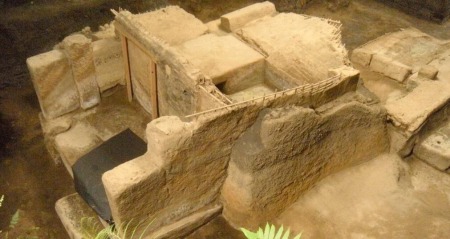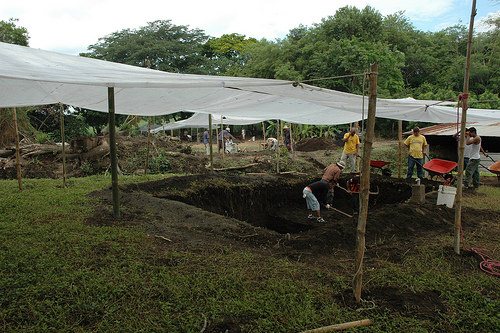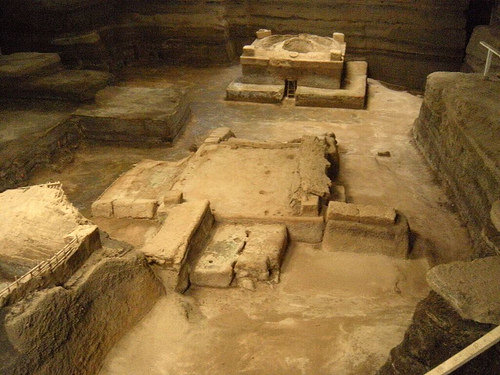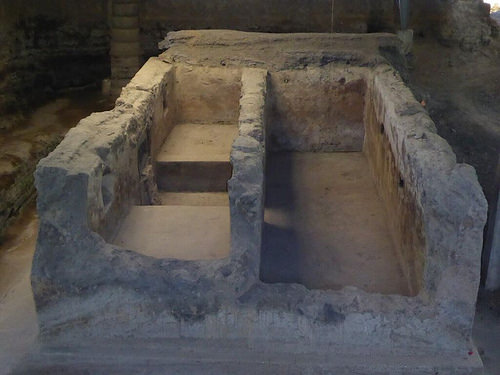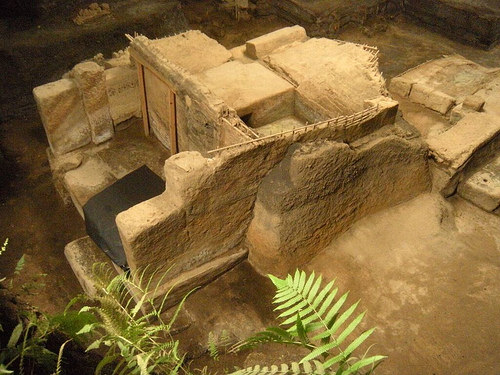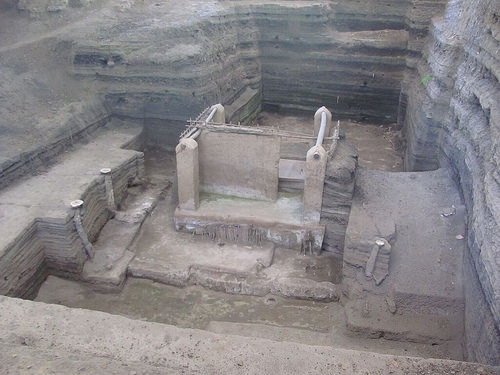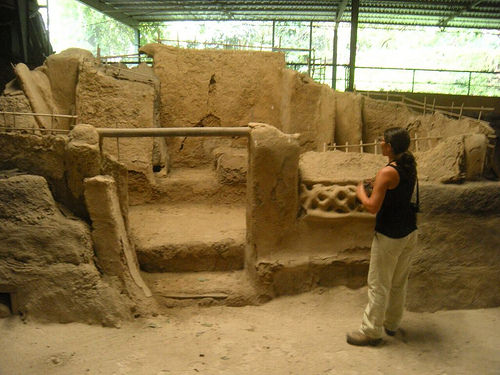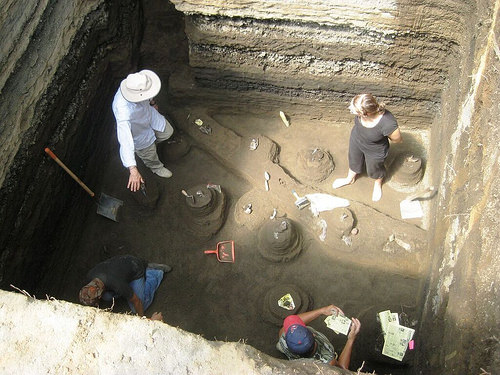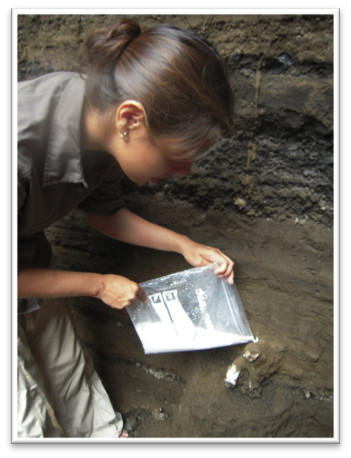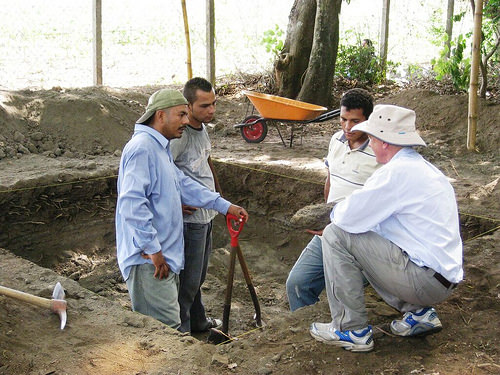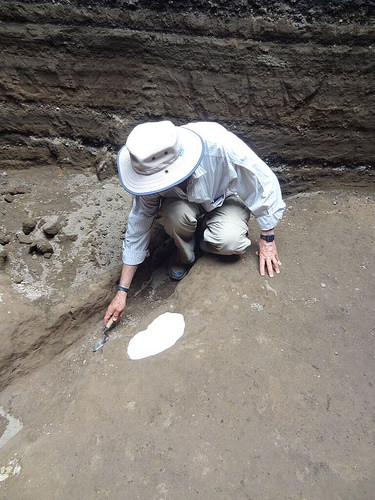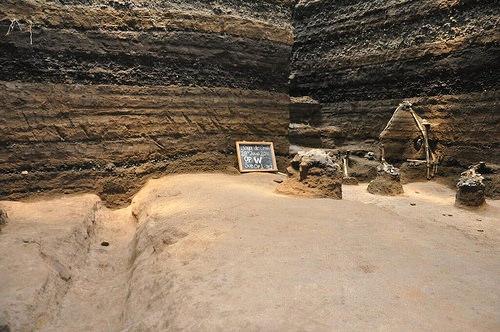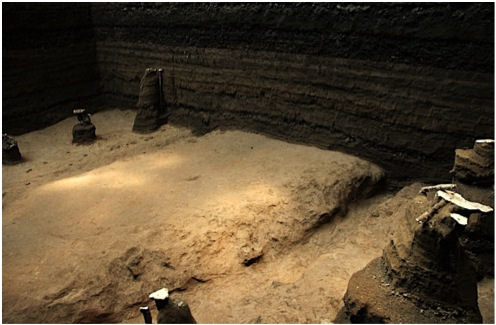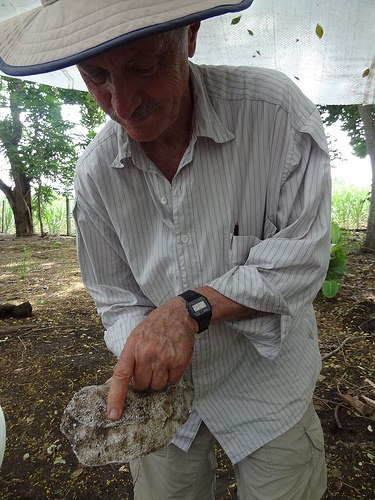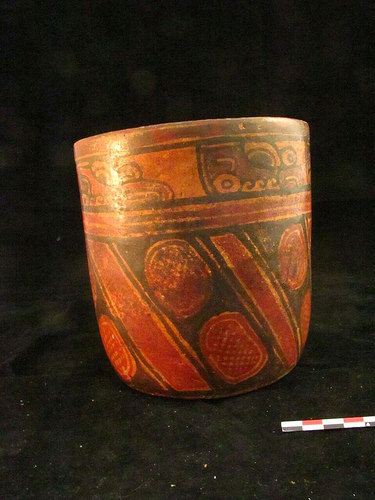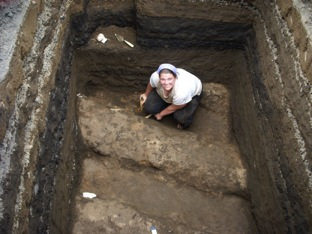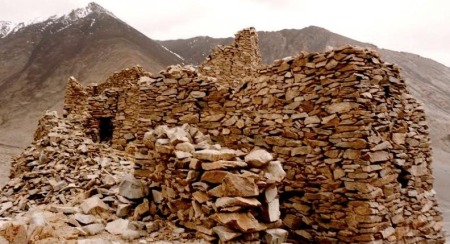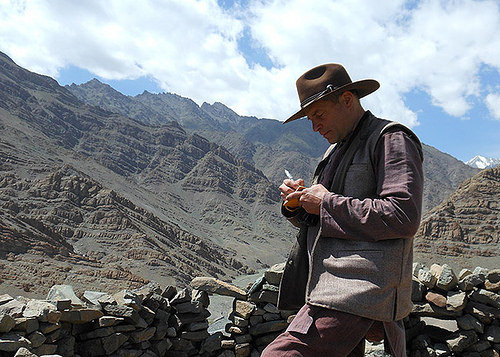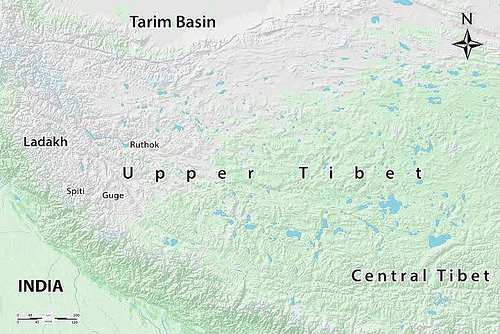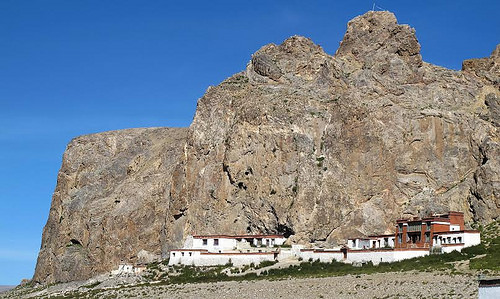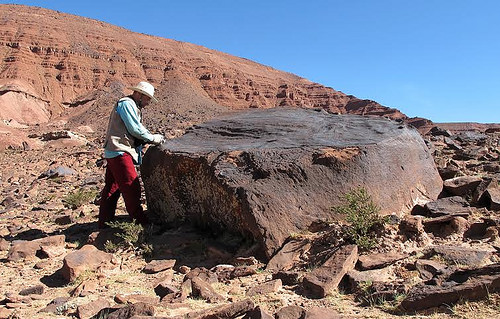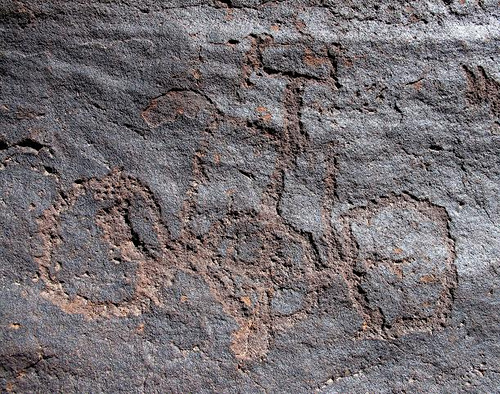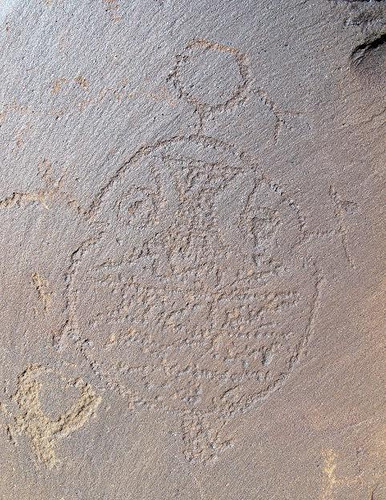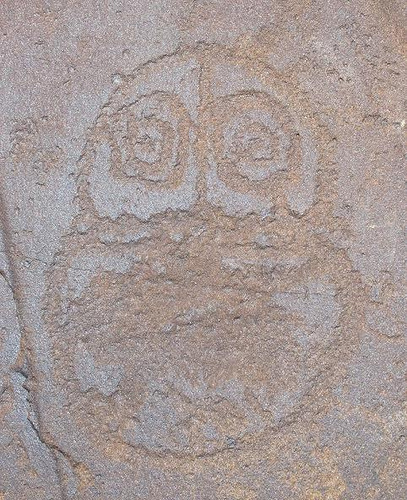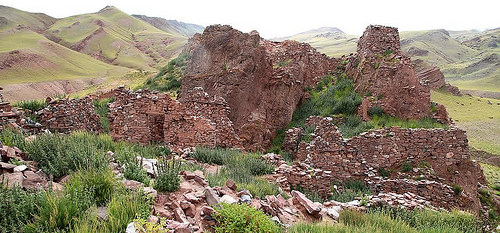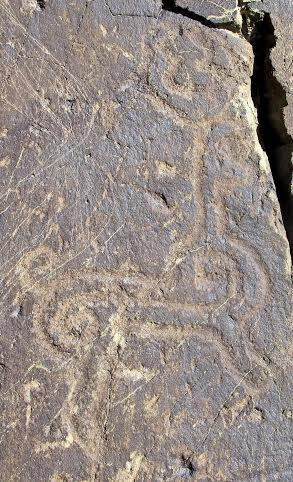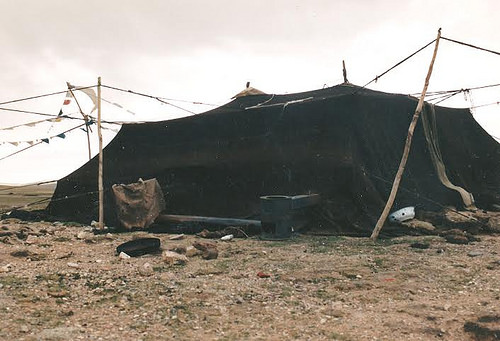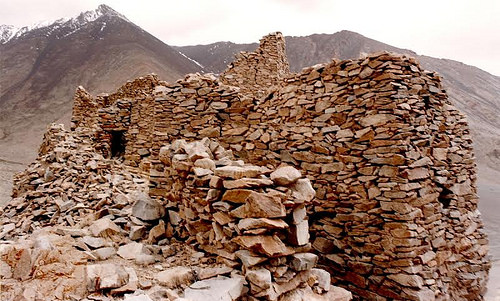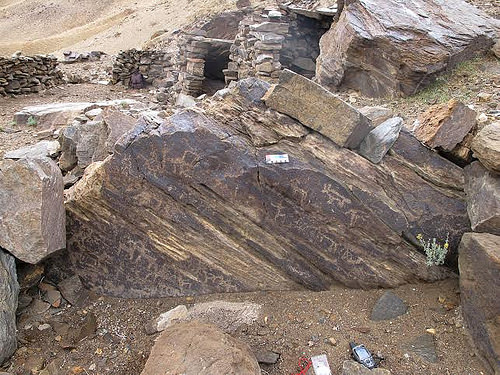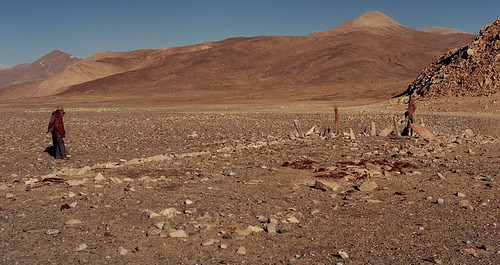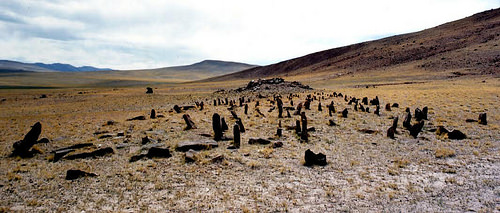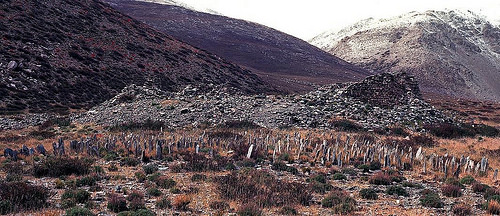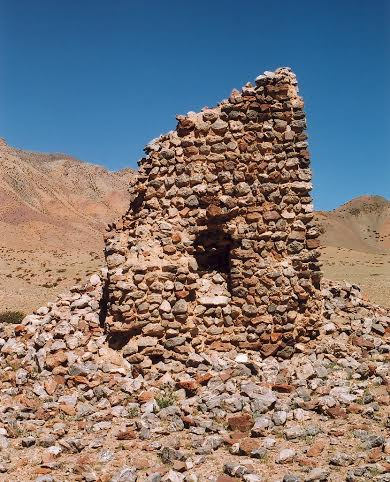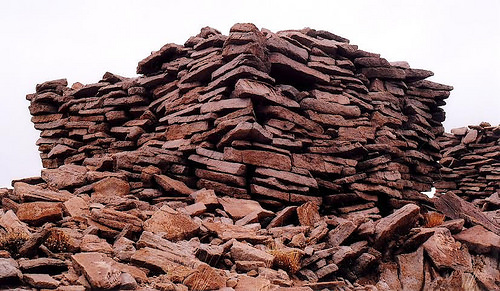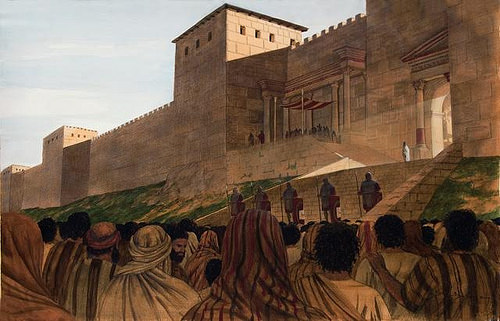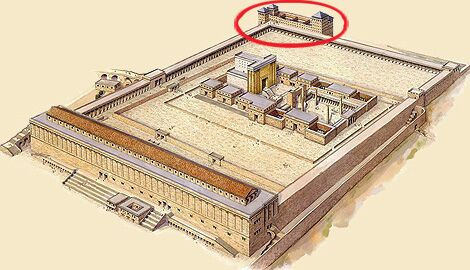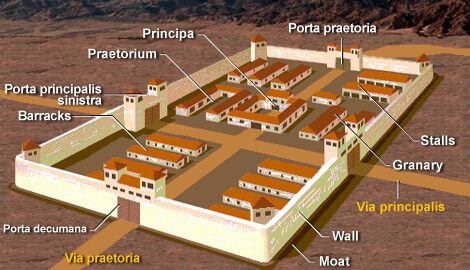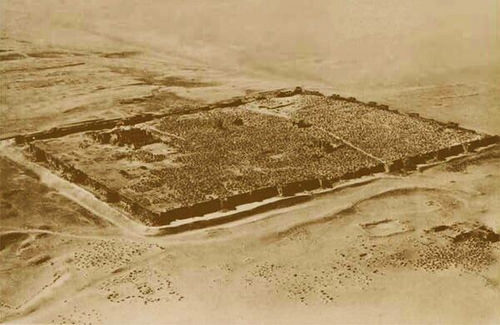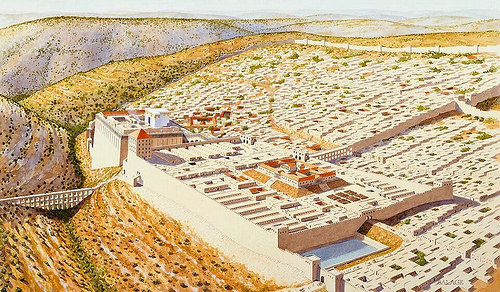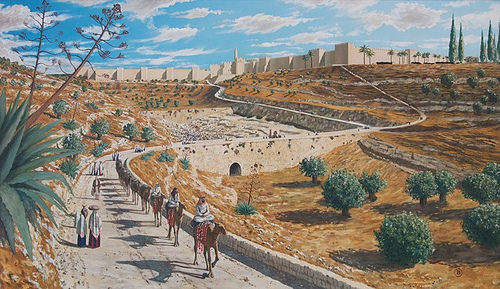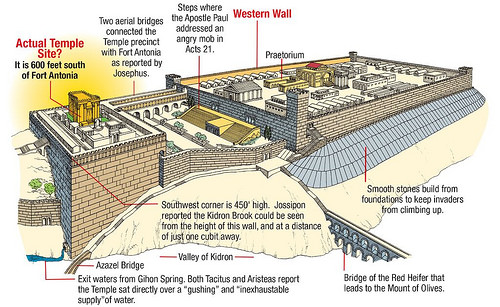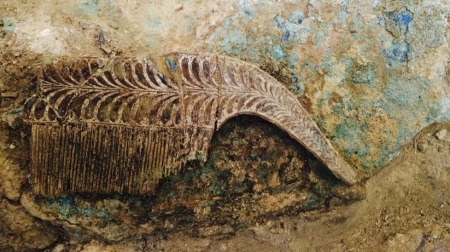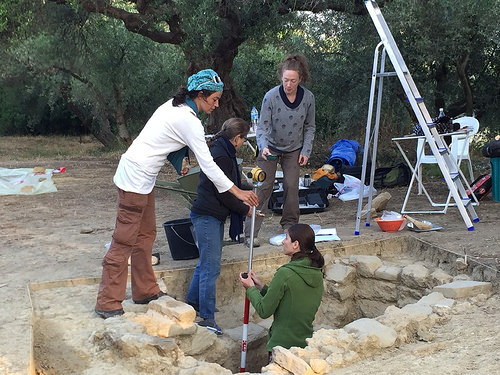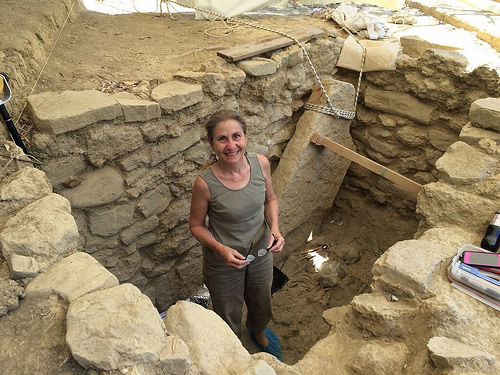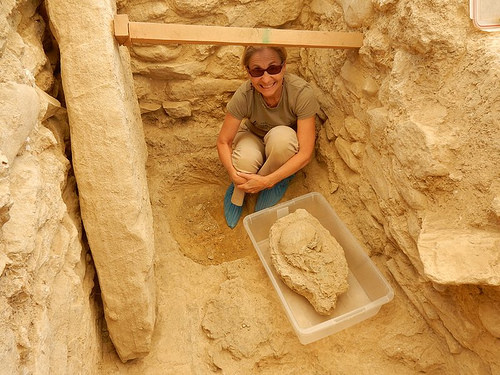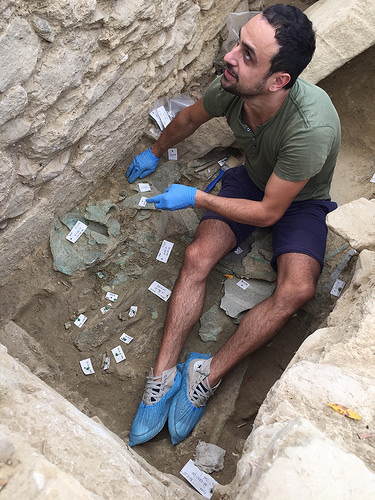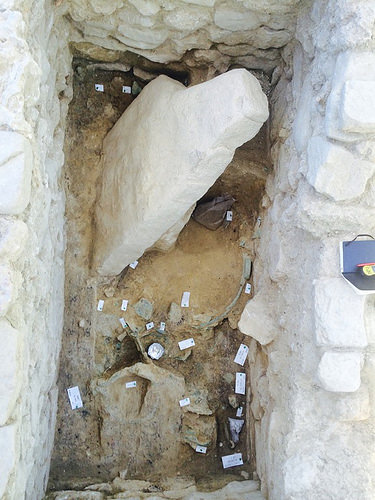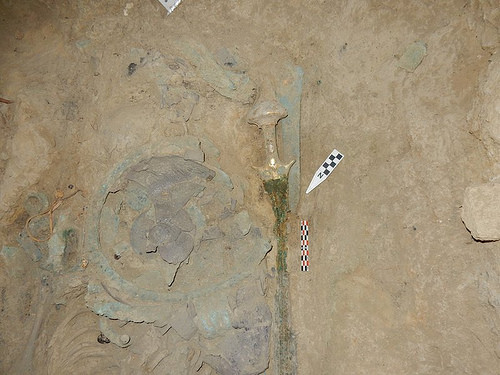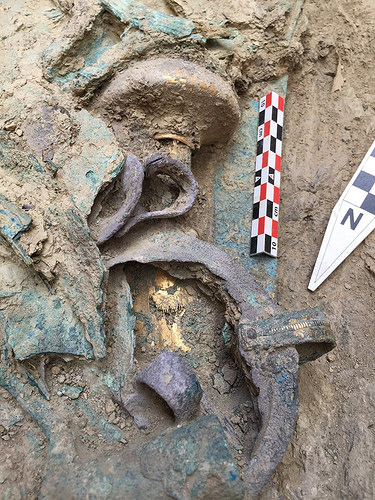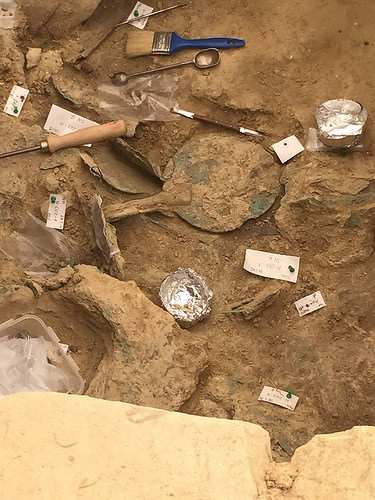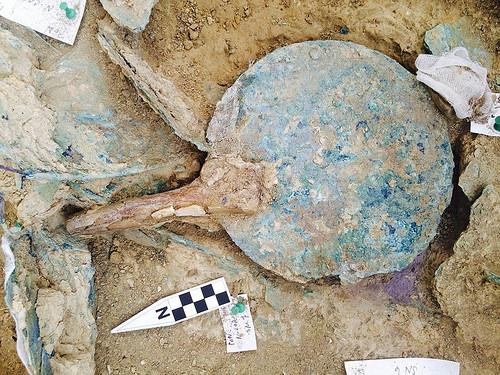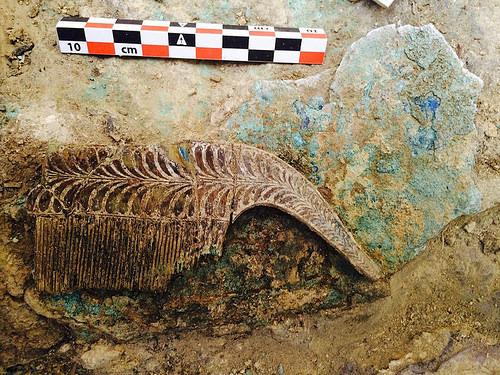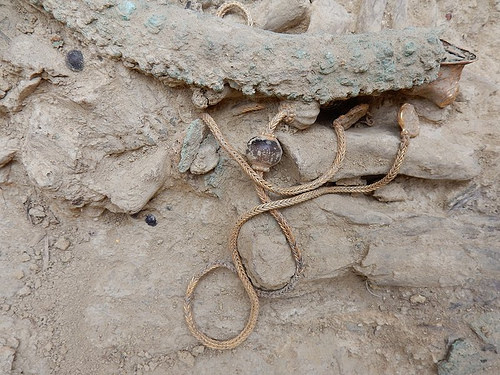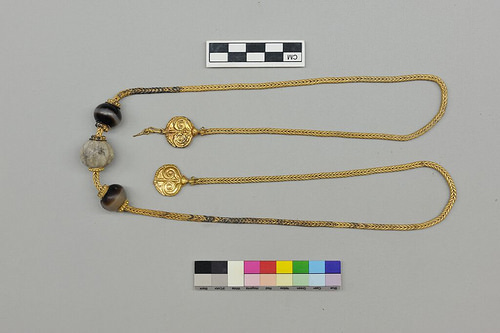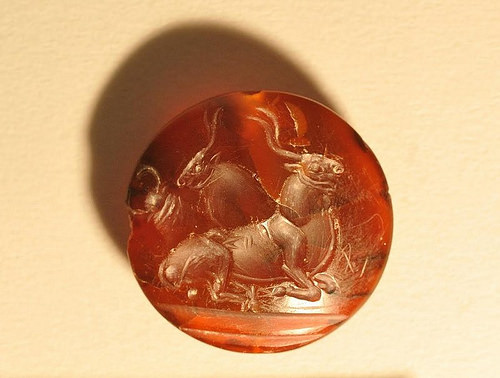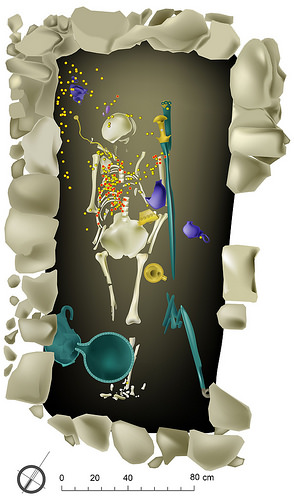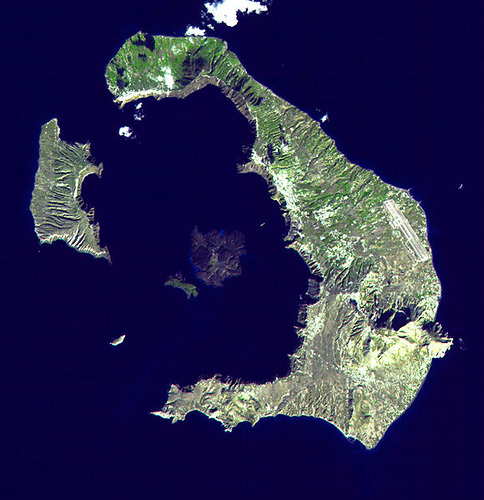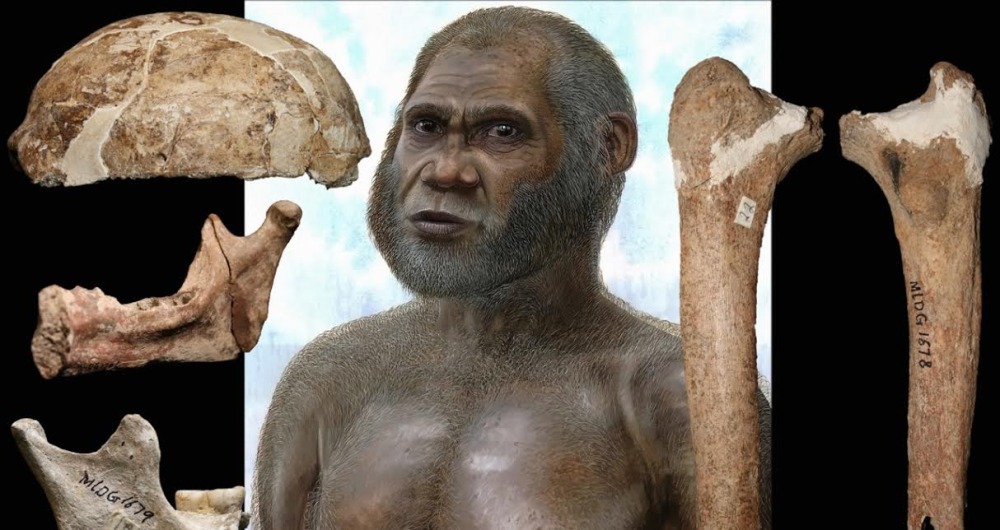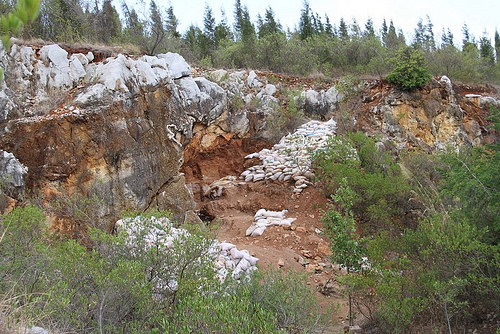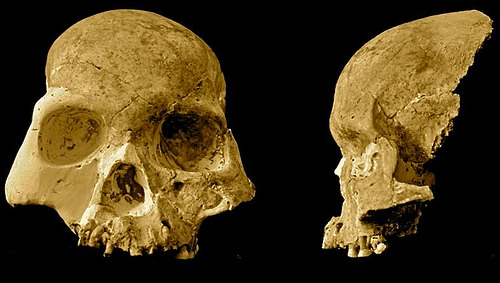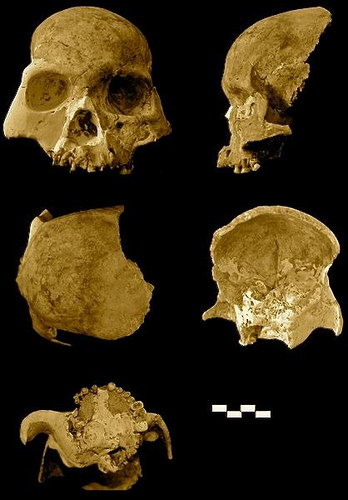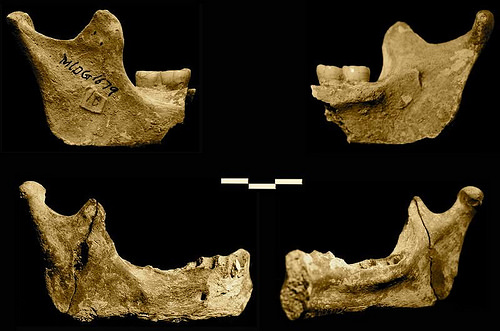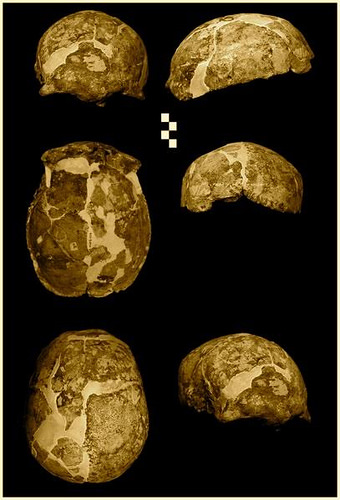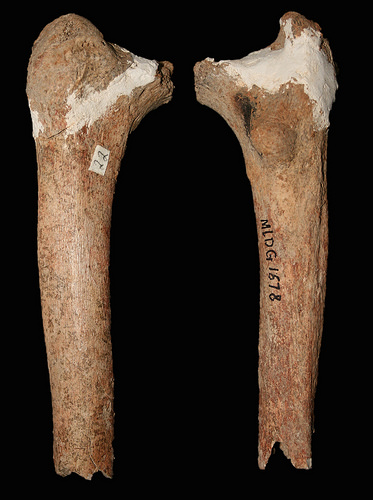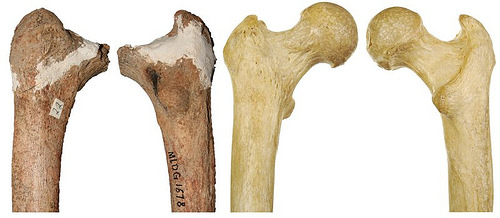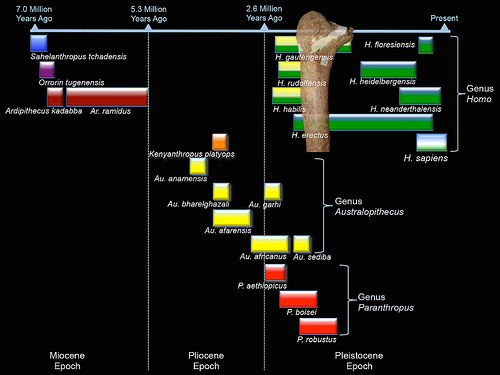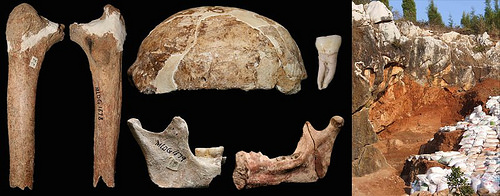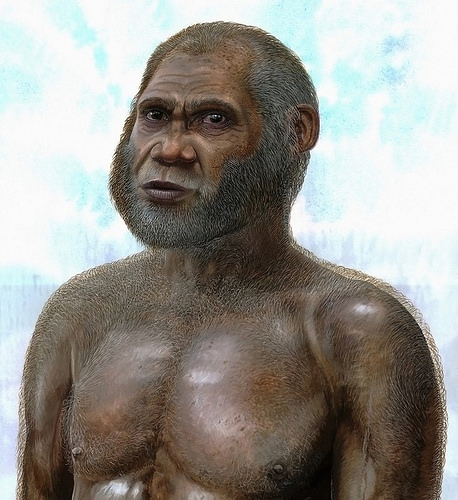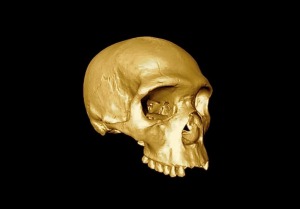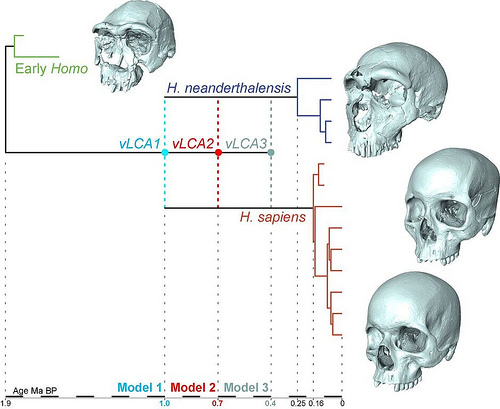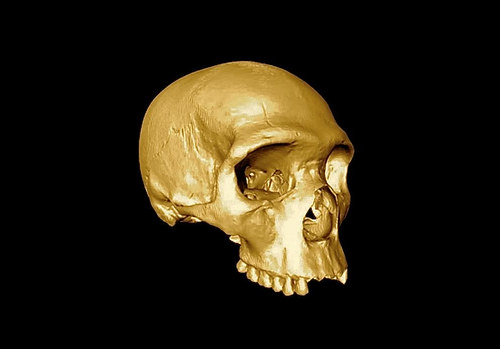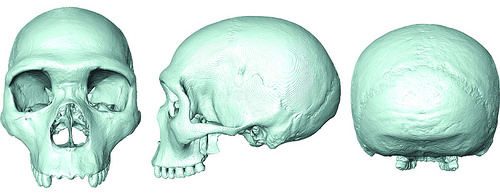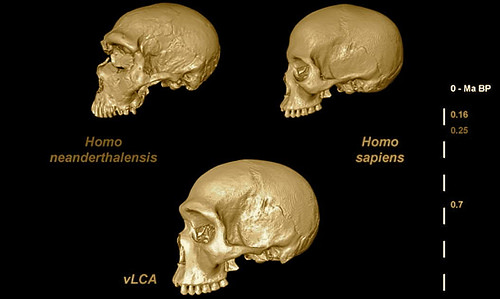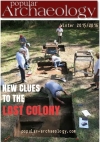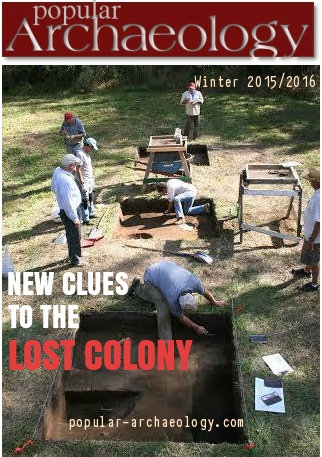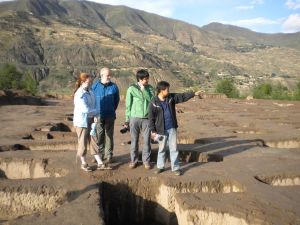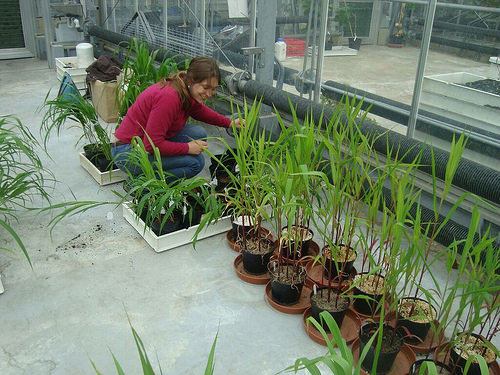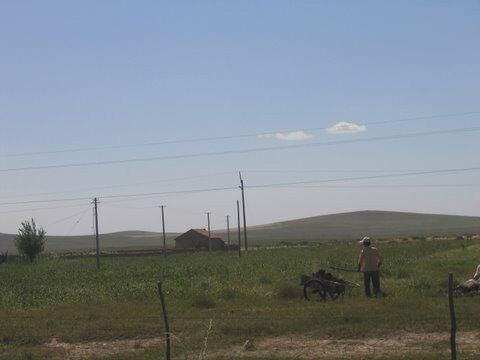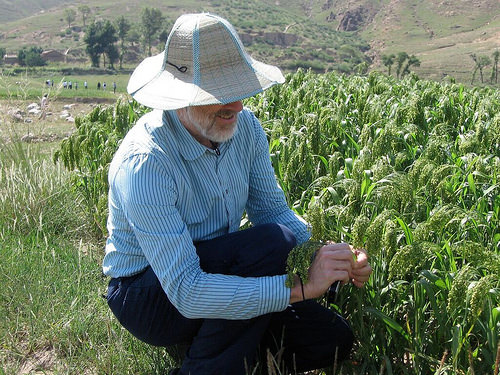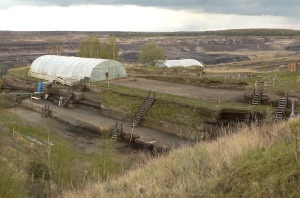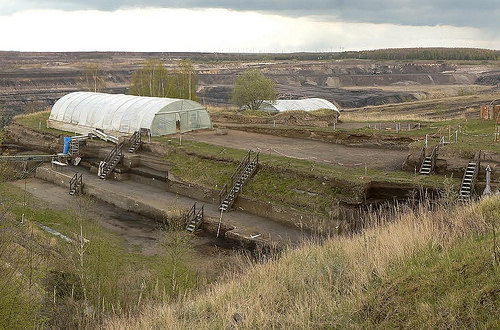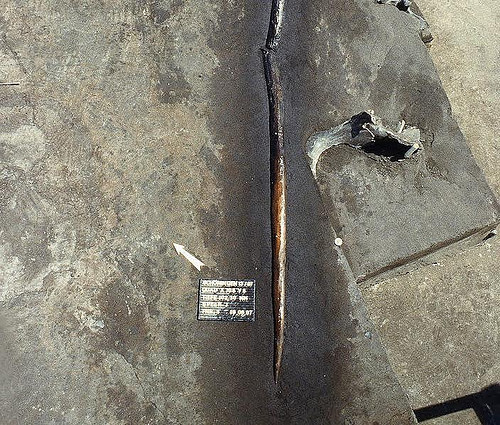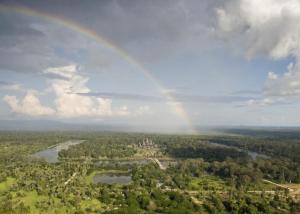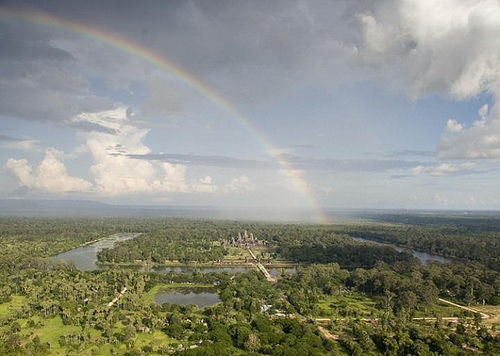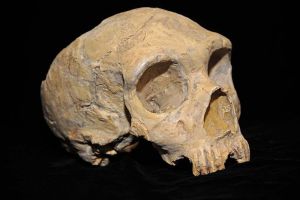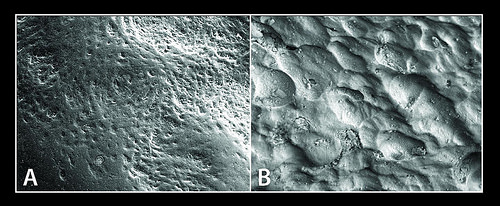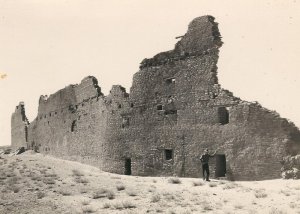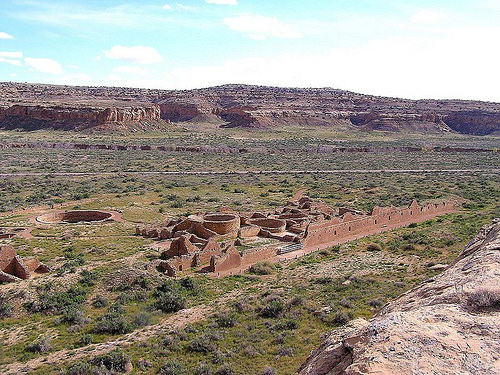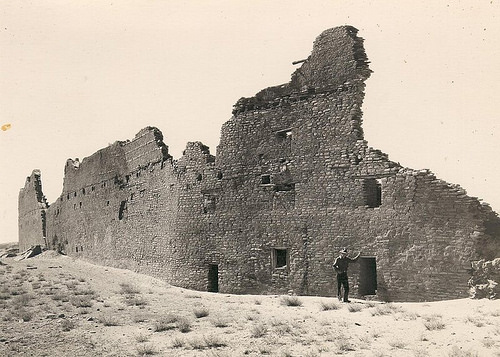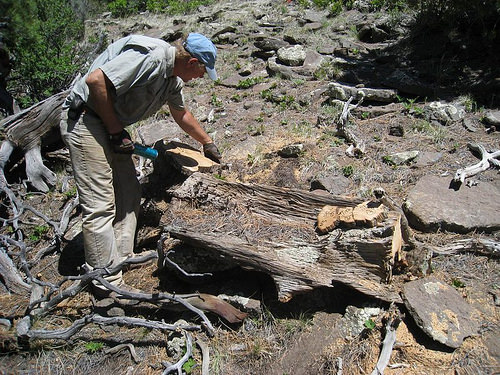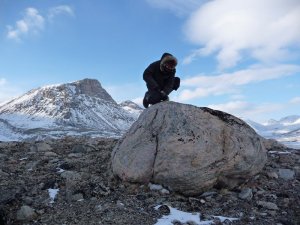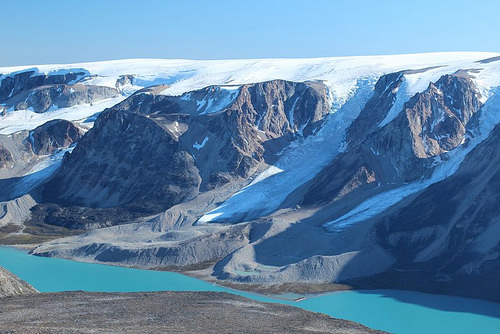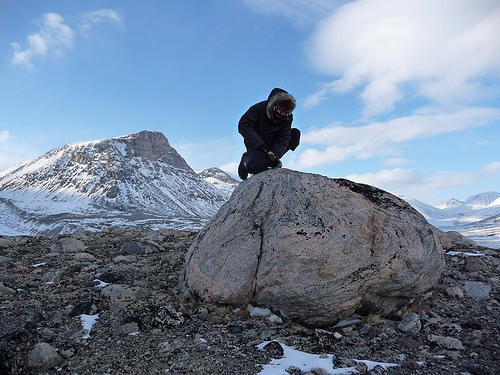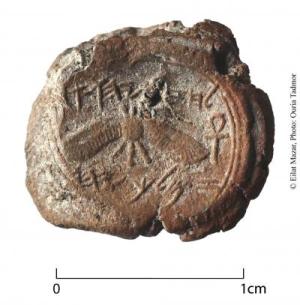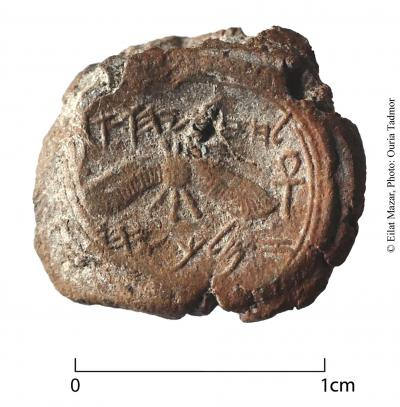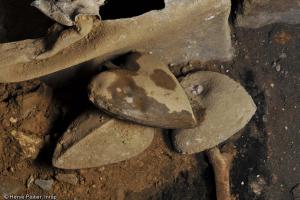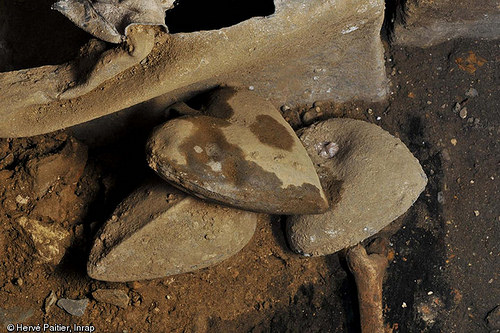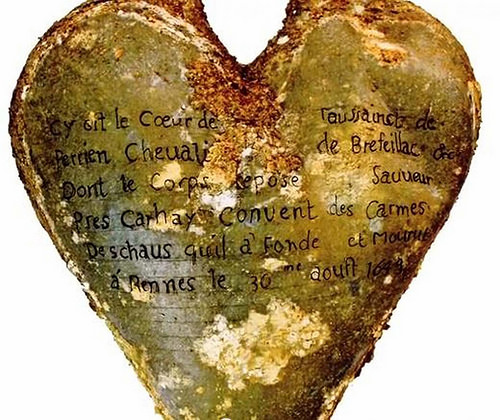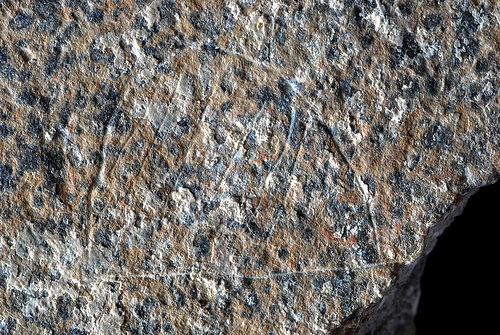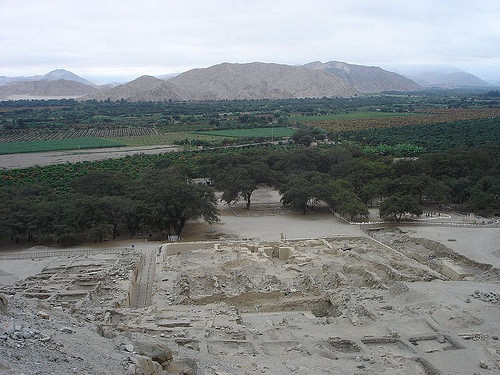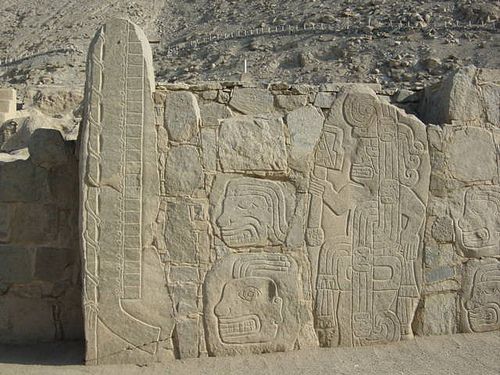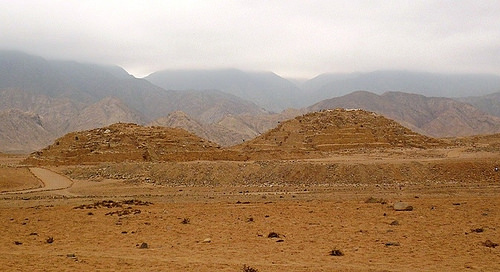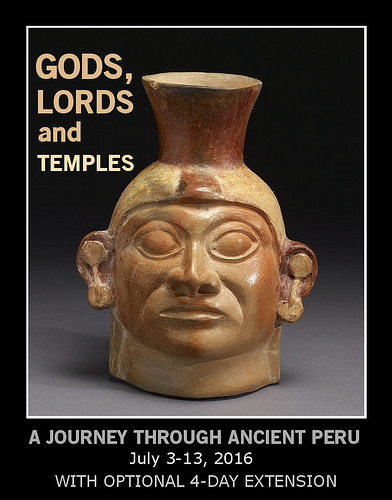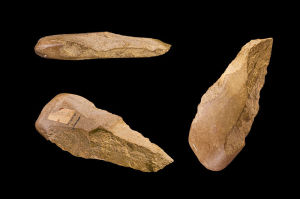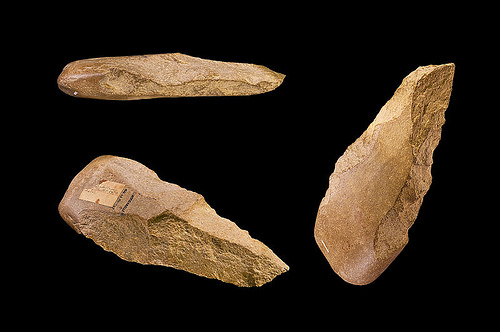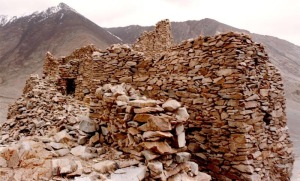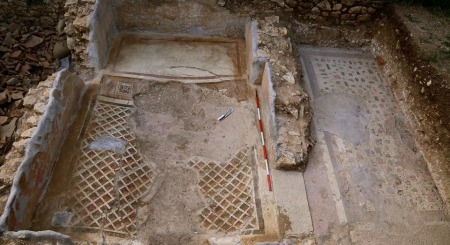
According to the well-known myth, the fledgling city of Rome, founded in 753 BC, began with a potentially fatal flaw. By opening up its gates to runaway slaves, criminals, and exiles, Romulus had succeeded in attracting men to his newly established settlement. But it lacked women, and these less than ideal bachelors understandably had trouble attracting brides. The Romans invited their northern neighbors, the Sabines, to a festival, only to kidnap their young women, who became the first Romans’ wives. Not surprisingly, war followed, but the ensuing peace saw a dual kingship for the new city: Romulus and Titus Tatius, the Sabine leader. The city would never have survived beyond a single generation were it not for these events, leading the Romans to value a special connection to the Sabine people – two nations united by blood from the very beginning.
The historical record, however, challenges this unlikely story. In reality, the Sabines were only definitively conquered by the growing Roman state in 290 BC under the general Manius Curius Dentatus. Undoubtedly, some of their land was confiscated and given to Roman veteran soldiers, a practice in keeping with Roman conquest. It was also at that time that the Romans awarded the defeated Sabines partial Roman citizenship (that is, without the right to vote in Rome’s elections). However, only a couple of decades later, in 268 BC, the Sabines were given full Roman citizenship, a groundbreaking concession for a non-Latin-speaking people. From this date forward, the Sabines and the Romans did enjoy something of the close affinity expressed in myth and legend. Several aristocratic Roman families claimed Sabine descent, such as the Claudii, whose members included the emperors Tiberius, Caligula, Claudius, and Nero. The founder of Rome’s second imperial dynasty, Vespasian, also hailed from Sabine country, bringing to the throne his ancestors’ characteristic austerity, hardiness, and no-nonsense approach to governance.
Nevertheless, the historical account of the conquest of the Sabines and their territory (called Sabinum by the Romans) leaves many questions about the impact of this event unanswered. For example: How did this political shift affect settlement patterns in Sabine territory? Can we detect the settlement of Roman soldiers and citizens in the territory by examining the archaeological record? How did this major restructuring of the relationship between the Romans and Sabines affect the economic ties between Sabinum and the city of Rome?
Since 2011, an archaeological endeavor, the Upper Sabina Tiberina Project (UST), operated under the auspices of Rutgers University, has sought to shed light on the long-term effects of the Roman conquest in one portion of the Sabines’ homeland.
The Sabina Tiberina
Today, the territory that encompassed ancient Sabinum is an area to the northeast of Rome called the Sabina (Fig. 1). It is a somewhat fluid region that spans parts of the modern regions of Lazio, Umbria, and Abruzzo. The Sabina is a hilly country, mainly given over to olive groves and dotted by picturesque medieval hill towns (Fig. 2). The uneven terrain makes for a meandering network of roads full of switchbacks that renders even modern car travel surprisingly time consuming (and nauseating to the weak of stomach). As a whole, the Sabina is divided roughly in half by the Sabine mountains, a formidable range running south to north that forms the foothills of the Apennines. The western boundary of Sabine country is the Tiber River and its valley (the opposite bank was the land of the Etruscans and the Faliscans, other rivals of early Rome), and this is what gives the western Sabina its name of Sabina Tiberina.
Unlike the Etruscan/Faliscan west bank of the Tiber, which has been extensively studied by archaeologists since the 1950s, the Sabine east bank has received considerably less attention. This is a surprising oversight given the importance of the river for trade with the city of Rome, a massive market with a million residents at its peak. The Tiber was the principal artery that gave the Romans access to central Italy. Moving goods over water was considerably cheaper and faster (especially downriver, as in this case) than overland travel in the ancient world. As a result, the Sabina Tiberina was an extremely valuable addition to Roman territory. Exploiting the fertile agricultural land closest to the river would have allowed Roman landowners to become very wealthy. It was also close enough to the capital that they could have reached their country estates in no more than a day or two’s travel.
One reason for the relative neglect of the Sabina Tiberina by archaeologists may lie in the region’s lack of urbanization in ancient times. While the Etruscans and Faliscans had developed an urbanized society with competing city-states (not unlike Rome and its other Latin speaking neighbors), the Sabines remained a more dispersed and rural people with few large cities. Enticed by rich settlements and a more forgiving terrain of rolling hills covered by plowed fields, generations of archaeologists systemically studied the west bank. On the other hand, the Sabina Tiberina, with its undulating, hilly terrain, makes archaeological survey (the systematic walking of agricultural fields in search of surface artifacts) difficult, if not impossible. This is not to say, however, that the east bank does not offer anything of historical interest. On the contrary, recent research on the Sabina Tiberina has suggested that the east bank of the Tiber may have been more heavily exploited than previously assumed, and many of its archaeological sites have yet to be studied using modern survey and excavation techniques.
The study area of the UST project (the ‘upper’ Sabina Tiberina) is its northern half, where the least amount of previous research has been carried out. The area had only one Roman town, Forum Novum, founded by the Romans at some point after the conquest in the early 3rd century BC in order to provide a market center for the dispersed estates of the region. By the 1st century AD, the town had been elevated to the status of a “true” Roman town (municipium in Latin), although research conducted by the British School at Rome in the early 2000s revealed that the town consisted of little more than a few public buildings and a nearby villa. However, what the region lacks in Roman urban culture is more than made up by a network of Roman villas – elite country residences connected to large agricultural estates.
______________________________________________
Fig. 1: Central Italy at the time of the Roman Empire, indicating the location of Sabinum and neighboring peoples. (Adapted from Pelagios Project)
_______________________________________________________________
Fig. 2: Landscape of the Sabina Tiberina. Village of Vacone (upper right) viewed from east. (UST Project Photo)
________________________________________________________________
Villas and the Upper Sabina Tiberina
The word ‘villa’ still brings to mind an image of a luxurious residence, and its ancient counterpart was a very distinctive type of lavish structure. Villas were arguably one of the most characteristic features of Roman culture, and one that spread across the Mediterranean and Western Europe with the expansion of Roman power. While many still debate the exact origins of this institution, it is clear that by the 1st century BC a wealthy Roman would likely have owned several of these types of residences across the Italian peninsula. In fact, it was a necessity for the ruling class – both socially and economically.
By definition, a villa was located in the countryside and it defined the center of a large agricultural estate. Since the landowners did not live in these properties year round, the residence served as a kind of country vacation home for the elite, but with all the comforts of city life. Villas were usually paved with mosaic floors and decorated with wall paintings and sculptures. Private bath complexes, decorative fountains, and formally planted gardens provided a suitable setting for a Roman aristocrat to devote himself to leisure, free from the pressures of political life in Rome. Yet central to the villa was a working farm. Land was the primary, and only socially acceptable, source of wealth for the aristocracy in the Roman world. Tended by slaves or tenants in the owner’s absence, these estates typically specialized in cash crops that were guaranteed to bring in a good return. These included olives, grapes (for wine), and even small game or other edible luxuries favored by the upper classes, such as snails, fish, and small birds. True Roman aristocrats owned several properties around Italy, diversifying against the risk of localized drought or disease. They made a habit of visiting each in turn throughout the year. The excuse was to check on farms and staff, but the true payoff was the opportunity to relax by hunting, reading, writing, and enjoying the pleasant setting of the estate.
The Sabina Tiberina, like much of the Italian countryside, was home to at least several dozen Roman villas. Many of these have been known for centuries due to their visible ruins dotting the hillsides and valleys of the region. Most were built with foundations of Roman concrete, which, by virtue of its durability, today leaves telltale masses of structural remains. Other villas were found when plows or other agricultural activity churned up large concentrations of broken pottery and roof tiles. A small number of sites even produced works of sculpture in earlier centuries. Very few, however, have ever been studied by professional archaeologists. One villa, located near the town of Cottanello, was extensively excavated in the 1960s by a group of amateur archaeologists. Only in the last few years have experts from the University of Rome “La Sapienza” returned to the site. Another villa, near the town of Forum Novum, was briefly explored with a few test trenches by British archaeologists over a decade ago. Outside of these two examples, no other villa in the region has ever been investigated by specialists.
The UST project has identified at least 15 villas of interest in the research zone (Fig. 3). One of the goals of the project is to study a select number of these sites using geophysical survey techniques – tools that require no digging to gain information about what is underground. These include ground penetrating radar, as well as magnetometry, a method that measures magnetic fields beneath the earth’s surface in order to discern significant anomalies, such as walls or voids. While the results are largely dependent upon local conditions, in the best case scenario they can provide plans of structures that are still underground. Nonetheless, in order to gain a more complete picture of a villa, such as a detailed understanding of its date and how it changed through time, there is no better technique than old-fashioned excavation. For this reason the UST project chose one particular villa in the region as the focus of intensive investigations – the villa at Vacone.
___________________________________________________
Fig. 3: Study area of the UST Project indicating sites of interest. The presence of cisterns often indicates a nearby villa, making these sites worthy of further investigation. (Map Data: Google, TerraMetrics).
_____________________________________________________________________
The Roman Villa of Vacone
The town of Vacone is located about 55 km north of Rome, perched on the slope of Monte Cosce, a formidable mountain that marks the border between the modern regions of Lazio and Umbria (Fig. 2). It is a very small town with fewer than 300 permanent residents, but the people of Vacone have a strong sense of their place in history. Every June, they observe the “Sacra Vacunae”, a festival that re-imagines the ancient Sabines’ celebration of their goddess Vacuna. Tradition holds that the town’s name derives from the name of the Sabine deity, whose temple sits beneath Vacone’s central church. While no definitive proof exists of a pagan shrine beneath the church, a few kilometers downhill stand the unmistakable ruins of a Roman villa.
Although known to travelers in the 18th century and earlier, the ruins of the villa were forgotten and only rediscovered in the 1960’s during road construction. Work crews stumbled upon the imposing remains of a vaulted structure called a cryptoporticus, built of Roman concrete and large blocks of local limestone, as well as a semicircular structure with a vaulted ceiling (Fig. 4). Further investigation revealed a second cryptoporticus just downhill from the first. Both could be entered through doorways and formed a kind of covered passageway. Such features are not uncommon in the architecture of Roman villas. However, these two particular structures formed the supports for a wide terrace upon which rests the main residential zone of the villa (Fig. 5). By the mid 1980s the cryptoportici were in need of repair, and a series of conservation efforts carried out by the Italian government shored up the remains. This work also uncovered one section of a well-preserved mosaic floor located on the upper surface of the lower cryptoporticus. This was removed and placed into storage, where it remains today.
As the UST project was getting underway in 2011, the Vacone villa was chosen for excavation for a number of reasons. First, the earlier work of the Italian government had exposed a series of doorways just to the north of the lower cryptoporticus. This strongly suggested that a series of rooms, possibly also paved by mosaics, lay waiting to be discovered to the north. Second, above the upper cryptoporticus were the remains of vats, channels, and a circular feature in the ground that surely belonged to a press for olive oil. Most importantly, the construction technique of the cryptoporticus wall, concrete mixed with rough large stones, suggested an early date, perhaps the 2nd c. BC or earlier. This would place the initial construction of the villa in the period not long after the Roman conquest of Sabinum, perhaps shedding light on the processes set in motion by this event. Therefore, the Vacone villa offers the possibility of examining several interesting facets of the Sabina Tiberina and its place in the study of Roman imperialism, the Roman economy, and, more generally, Roman society and culture.
___________________________________________________
Fig. 4: Upper cryptoporticus viewed from west. In the foreground is Room 12, paved in cocciopesto, which likely served as a storage area. (UST Project Photo)
___________________________________________________________________
Fig. 5: Overall view of the villa from the south with the 2013 field crew. Both the lower and upper cryptoportici are visible. Note the clearly visible reconstructed sections in the lower structure. (UST Project Photo)
_____________________________________________________
Excavation Highlights
To date, four seasons of fieldwork have been carried out at Vacone. Every summer, undergraduate and graduate students from the United States and the U.K. come to Vacone to learn proper archaeological methodology while furthering the research goals of the UST project. They join an international staff that comes from Italy, the United States, U.K, and Australia. Many local residents of Vacone also generously volunteer their time and resources to help advance the study of this invaluable piece of Roman heritage.
At the end of the 2015 season, excavations had uncovered evidence of at least 32 distinct rooms, although some of these remain only partially excavated (Fig. 6). The vast majority of these rooms belong to the residential sector of the villa, as evidenced by the presence of mosaic floors and painted wall plaster in most of these rooms. The plaster is generally only preserved for a few centimeters along the walls, but hundreds, if not thousands, of fragments have been recovered and are awaiting study. Most walls were colored with red, black or yellow backgrounds and accompanied by a variety of designs, such as an unusual ring pattern not known from other sites, or another fragment containing a bird and plantlike motifs (Fig. 7). A particularly well-preserved section still in place on the east wall of Room 4, with an intricate geometric and floral design in black and red, provides a hint of the types of schemes that many of the villa’s walls once contained (Fig. 8). Other rooms of the villa also produced examples of molded stucco that once adorned the walls and ceilings.
Many of the mosaics, on the other hand, are in good condition and are among the most noteworthy aspects of the villa. All are geometric in design and typically consist of black, white, and red tesserae – the small cubed stones that make up a mosaic floor. The red stones, quite rare in Roman mosaics in general, come from a quarry in the neighboring town of Cottanello. A few mosaics of higher quality contain multiple colors arranged in intricate designs, some even mimicking shaded perspective. For example, the mosaics of Rooms 10 and 4 both include border zones with complex shaded designs of triangles and diamonds in green, red, white, and black (Figs. 8 and 9). The border zone in Room 10 may have originally marked off a niche where a bed, either for sleeping or dining, may have once stood. Other notable mosaic designs in the villa include a double wave (Fig. 10) and checkerboard pattern, as well as a few variations on a net motif. Several rooms also contain mosaics of the type called opus scutulatum, which consists of a series of larger colored stones set into a background of single colored tesserae (white or black) or other types of plain pavement. Especially remarkable in the Vacone villa is ample evidence of repairs made to the mosaic floors in ancient times. In Room 8, for example, a large area of damage to an opus scutulatum was replaced in antiquity by red or white tesserae arranged to mimic the lost colored stones of the pattern (Fig. 11). Repairs to the mosaic are also evident in Room 10. In other rooms, mosaic floors that became damaged in ancient times were simply covered over by simpler paving techniques, such as cocciopesto (a pavement made of mortar and crushed ceramics). The buckling of the floors in several areas hints at structural issues in the villa’s design that may have possibly led to the villa’s eventual abandonment.
Not every room in the villa was paved with mosaics, however. Some rooms seem to have been used for storage or more utilitarian purposes. These areas produced a rich assortment of artifacts and were paved with more utilitarian flooring techniques, such as plain concrete, opus spicatum (a pavement made of bricks arranged in a herringbone pattern) and cocciopesto. For example, room 12, located adjacent to the upper cryptoporticus wall and paved in cocciopesto, produced over 3000 ceramic sherds, mainly cookware and storage containers (Fig. 4). Also noteworthy was an iron key and the remains of a bronze locking mechanism, probably from a storage chest (Fig. 12).
The main agricultural zone was located in the northeastern zone of the villa, beside the upper cryptoporticus. Excavation has revealed many more details about this area, including evidence for not just one, but at least two olive presses (Fig. 13). Once pressed, the olive oil ran along brick lined channels to a series of three vats that could be opened and closed to control the flow of oil (Fig. 14). These vats were used to separate the oil from the amurca, the watery byproduct of olive pressing. Another channel reveals how the liquid in the vats could be drained into the upper cryptoporticus, for reasons still under investigation. Preliminary research suggests that the presence of two presses puts the Vacone villa in rare company, with fewer than 30 other villas in the region of Lazio out of a total of over 300. At the very end of last season, we also discovered a basin for collecting juice from a grape-treading floor, not far from the pressing area. While further exploration is needed, this may hint at a shift from olive to wine production during the course of the villa’s occupation.
The villa has also produced a few surprises. During the second season of digging, a small void opened up during excavation near the corner of one of the villa’s largest rooms, Room 7. Two seasons of careful excavation in cramped conditions have revealed that this was a vaulted passageway leading to the lower level of the villa and the interior of the cryptoporticus below (Figs. 15 and 16). It had a floor of beaten earth and was full of broken pottery, including several lamps, a necessity in this gloomy underground section of the villa. This past summer, a secondary passageway was identified, opening perpendicularly to the original tunnel, that leads into a circular vaulted chamber. A two by two meter test trench centered on the midpoint of the round chamber was excavated to see what architecture corresponded to this feature on the ground level of the villa. This revealed a stone with a cut opening that sits directly atop the capstone of the vaulted chamber below (Figs. 17 and 18). This feature has defied early attempts to understand its function. The opening brings to mind a latrine or wellhead for a cistern, but its placement and surrounding architecture do not support these interpretations. Future excavation within the circular chamber will hopefully shed light on this mysterious feature. Furthermore, additional passageways or collapsed underground vaults were discovered last summer in the western end of the villa. Several floors of the villa also produce a distinctive (and disconcerting) hollow sound when struck. This suggests that more of the terrace may be artificially constructed than previously assumed. If so, there may be far more to be investigated in the underground spaces of the villa.
Finally, four seasons of fieldwork have finally begun to provide some indications of the villa’s chronology. Much of the evidence for the earlier phases of the villa came to light due to damage the villa sustained during agricultural work in later centuries. All across the site, deep trenches were dug, possibly for vines, that cut through the mosaic floors of the villa in several areas. Excavating within these cuts allowed us to gain windows into what lies beneath the villa’s mosaic floors, which probably date to the 1st or 2nd centuries AD. For example, beneath the floor of Room 3 we found an earlier floor in opus scutulatum, but paved with cocciopesto rather than the mosaic background of later floors in the villa (Fig. 19). Ceramic evidence currently suggests a date around 100 BC for this earlier phase of the villa, but future study will refine our knowledge of the villa’s initial construction.
On the other end of the villa’s history, we are also beginning to understand how the villa came to be abandoned. At some point, new walls were constructed along a different orientation from the walls of the imperial era villa. Many of these new walls were built through the mosaic floors of the 1st or 2nd century AD, indicating their later date (Fig. 10). At an unknown subsequent date, the rooms of the villa also came to be used for human burials. So far, six individuals have been found. Four were male adults in their 30s, one was a young child of indeterminate sex, and the last was a newborn, found within a drain inside the upper cryptoporticus. The only indication of when these individuals were buried comes from a medallion dating to 1700 discovered near one of the adult burials (Fig. 20). However, since there is clear evidence that the bones were disturbed after the initial burial, it could suggest a date when the remains were reinterred rather than the date of the original interment. As for when the villa was abandoned, preliminary evidence suggests the villa may have gone out of use as early as 200 AD. For instance, of the several coins that we have discovered on the site, the latest datable examples are from the 2nd century AD, and many were found on the surface of the latest floors, mixed in with the collapse of the structure. The same holds true for the diagnostic pottery found on site – no forms date later than about 200 AD.
__________________________________________________
Fig. 6: Site plan of the Roman villa at Vacone as of the end of the 2015 season. (UST Project)
__________________________________________________
Fig. 7: Fragments of decorated wall plaster with plantlike designs and a bird. (UST Project Photo)
___________________________________________________________________
Fig. 8: Room 4 viewed from the south. The inset contains a detail of the indicated section of wall plaster. (UST Project Photo)
_____________________________________________________________________
Fig. 9: Rooms 10 (left) and 20 (right) viewed from the south. The mosaic pattern of Room 10 likely indicates a niche where a bed was located in the far end of the room. A repaired section is also visible in the border zone. Room 20 preserves the opus scutulatum design. (UST Project Photo)
_____________________________________________________________________
Fig. 10: Room 32 with a mosaic design in a double wave motif, viewed from the east. Note the later wall that bisected this room. (UST Project Photo)
______________________________________________________________________
Fig. 11: Detail of repair to an opus scutulatum mosaic in Room 8. Note how the repairman recreated the colored stones of the original using mosaic tesserae. (UST Project Photo)
_______________________________________________________________________
Fig. 12: Key and bronze fragments from a locking mechanism, probably from a chest. (UST Project Photo)
_______________________________________________________________________
Fig. 13: Pressing area viewed from the southwest. The circular pressing beds and channels for oil have been highlighted in black. In the background are the remains of a semicircular vaulted structure that was once a full dome. It may have belonged to a bath complex, but was later converted to agricultural use. (UST Project Photo)
______________________________________________________________________
Fig. 14: Vats for collecting olive oil, viewed from the east. Note the channel running along the right side of the vats, which leads from the presses. The flow of oil could be controlled by blocking openings into each of the vats. (UST Project Photo)
_______________________________________________________
Fig. 15: Opening of subterranean passageway during the course of excavation in 2014. (UST Project Photo)
________________________________________________________________________
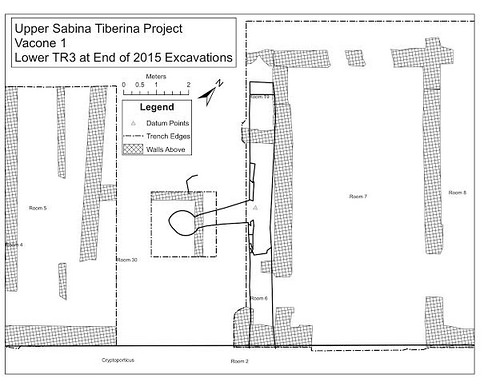 Fig. 16: Plan of southeastern section of villa indicating lower level passageways. The hatched areas indicate walls on the surface, while solid lines display underground tunnels. Note the side passage that opens into a circular vaulted chamber below Room 30. (UST Project)
Fig. 16: Plan of southeastern section of villa indicating lower level passageways. The hatched areas indicate walls on the surface, while solid lines display underground tunnels. Note the side passage that opens into a circular vaulted chamber below Room 30. (UST Project)
_________________________________________________________________________
Fig. 17: Room 30 with an opening into the circular chamber below, viewed from the west. The layout of the mosaic indicates that it was designed around the opening, which could be sealed by a cover, as evidenced by a lip carved around its interior. (UST Project Photo)
______________________________________________________
Fig. 18: Circular vaulted chamber beneath Room 30. Looking up towards the opening. (UST Project Photo)
________________________________________________________
Fig. 19: Room 8 viewed from the north. The newer mosaic pavement (opus scutulatum on a black background) is visible above. The older pavement (opus scutulatum on a cocciopesto background) can be seen at a lower level. A drain was cut through this older floor at the time that the newer floor was created. A large circular cut for an olive tree can be seen in the center of the photo. (UST Project Photo)
__________________________________________________________________________
Fig. 20: Male adult skeleton discovered in Room 16, covered by a roof tile. In the inset is a bronze medallion found nearby depicting St. Peter and the doorways of basilicas in Rome, celebrating the Jubilee of 1700. (UST Project Photo)
_________________________________________________________
Horace’s Villa?
Near the entrance to the site of the Vacone villa is a sign that reads “Villa di Quinto Orazio Flacco” – the villa of Quintus Horatius Flaccus. English speakers know this individual as the Roman poet Horace, famous for the adage carpe diem as well as a rich body of surviving work. One of the most salient details known about Horace’s life was that Maecenas, one of Augustus’ closest confidants and Horace’s personal patron, gave him a “Sabine villa.” This villa and its adjoining estate allowed the poet the space and time to devote himself to his poetry, and for this reason it provides the setting for several of the poet’s works. Generations of antiquarians and scholars have sought the location of Horace’s famous Sabine villa. Of the few clues to the location of Horace’s villa given in his poetry is the detail that it was located “behind the crumbling temple of Vacuna” (Epistles 1.10). As mentioned earlier, tradition holds that the town of Vacone took its name from a supposed temple of Vacuna beneath its central church. As a result, many local residents resolutely believe that the great poet once called their little town home.
Given the lack of evidence for this attribution, the UST project took little notice of this popular local belief. However, two discoveries, brought to light in 2013 and 2014, have given us reason to reassess this attribution, or at least the villa’s fascinating afterlife as “Horace’s villa” (Fig. 21). The first artifact uncovered was the rim of a dolium, a giant storage vessel that was buried in the ground, inscribed with HORATI F. The following year produced the rim of an amphora, an ancient vessel used to transport oil and wine, with the inscription HORATIUS. It is not out of the question that the excavation of a villa might uncover objects inscribed with the name of the villa’s owner. In fact, this very situation occurred at the neighboring villa of Cottanello, where a dolium rim was discovered identifying the owners as the Roman family of the Aurelii Cottae (and hence the namesake of the modern town). However, our initial excitement was quickly tempered by the realization that our inscriptions were not ancient, but fake. The letters were carved with a sharp object into the pottery after they had been fired, unlike genuine inscriptions that tend to be stamped into the wet clay before firing (such as the Cottanello dolium). Furthermore, the shapes of the letters were different than those used by the Romans, and the objects were found near topsoil, in contexts that were disturbed by later agricultural activity.
While it is impossible to give a precise date for this case of forgery, it is tempting to connect these objects to the 18th century. At that time, several travelers’ accounts reveal that sections of the villa were exposed and displayed to visitors as “Horace’s villa”. Some contemporary writers even mention inscriptions on display that “proved” this was the genuine villa of the poet. These inscriptions, one of which still survives to this day, were also counterfeit. Therefore, it is not out of the question that the two inscribed pottery rims date back to this time period. Even if the UST has not accidently uncovered the famous Sabine villa of Horace, it has nonetheless shed new light on the villa’s remarkable afterlife. As to the true identity of the villa’s owner, one can only hope that subsequent seasons will uncover a piece of evidence as telling as the two inscribed rims purport to be.
_________________________________________________
Fig. 21: Upper: Rim of a dolium found in 2013, inscribed HORATI F. Below: Amphora rim found in 2014, inscribed HORATIUS. (UST Project Photo)
_________________________________________________________________
Further Information:
For additional information on the Upper Sabina Tiberina Project, or to apply to participate in the excavation at Vacone, please see the project’s webpage at: fieldschool.rutgers.edu.
The Upper Sabina Tiberina Project is directed by Gary D. Farney (Rutgers University-Newark, Project Director), Dylan Bloy (Field Director), Giulia Masci (Site Director, Science Museum-London), Ian Travers (ICOMOS-Australia, Assistant Director for Excavation Operations), Candace Rice (University of Edinburgh, Assistant Director for UST), Tyler Franconi (Oxford University, Assistant Director of Finds), and Kimberly Brown (University of the Arts, Assistant Director for Survey Operations).
_________________________________________________________________
Receive 30 days free access to the popular new CuriosityStream lineup of documentaries on science, history, nature, and technology as a new Popular Archaeology premium subscriber.
___________________________________________
Travel and learn with Far Horizons.
____________________________________________

